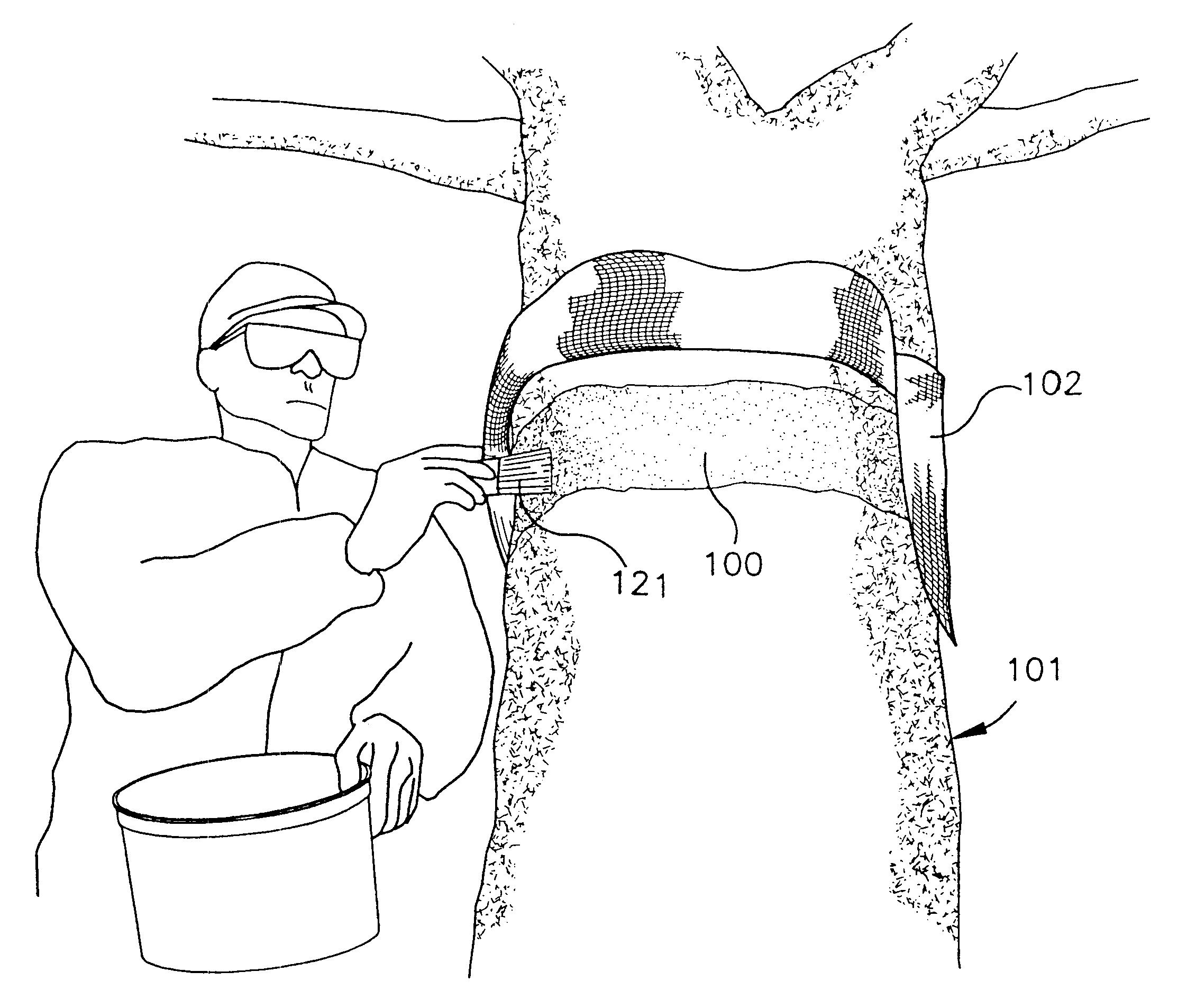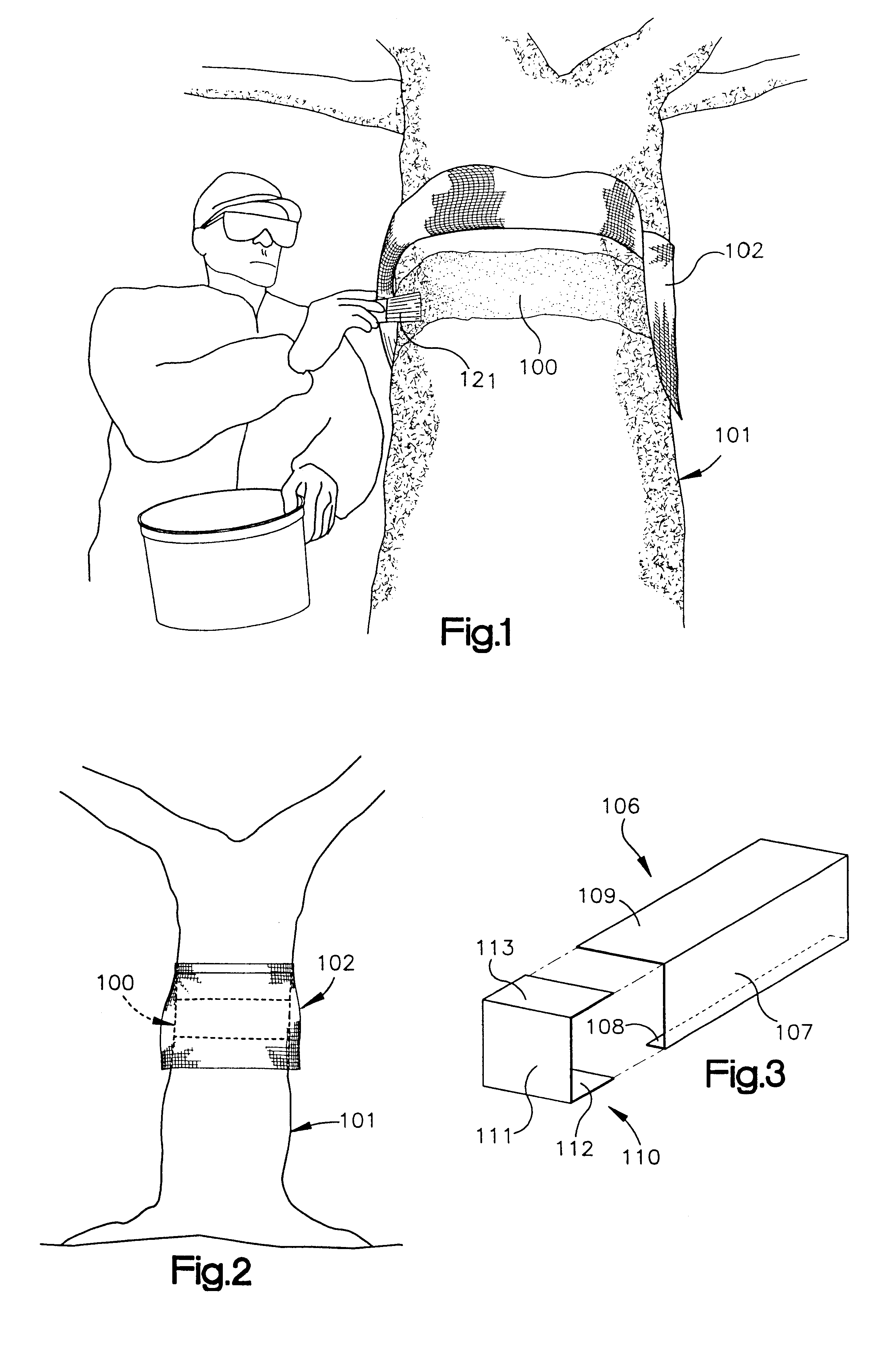Method of controlling insect infestation
a technology of insect infestation and control method, which is applied in the field of controlling insect infestation, can solve the problems of pests leaving their feces on the structure, destroying foliage, and unsightly messing on the side of the structure,
- Summary
- Abstract
- Description
- Claims
- Application Information
AI Technical Summary
Problems solved by technology
Method used
Image
Examples
Embodiment Construction
A group of 10 oak trees was selected. The group consisted of 5 pairs of White Oaks and 5 pairs of Red Oaks. As shown in FIG. 1, burlap was adhered to all trees with twine and staples at the top portion of the burlap 102. A 3 / 4 cm width inner flap was formed at the top margin of the burlap flush against the tree by folding the top margin of the burlap. An outer flap with a 20 cm width was formed which hung away from the tree trunk. Using approximately 900 ml of an insecticidal coating containing chlorpyrifos (in a form sold under the name SUPER IQ.TM.), 10 trees were coated with a nylon bristle paintbrush to form a continuous 20 cm band around the tree trunk 101. The band of chlorpyrifos insecticidal coating overlapped the inner band of the burlap. The outer flap of the burlap was pinned up during the application and drying of the chlorpyrifos insecticidal coating. After the bands dried for 24 hours, the flaps were allowed to hang over the band of insecticidal coating. Control group ...
PUM
| Property | Measurement | Unit |
|---|---|---|
| Time | aaaaa | aaaaa |
| Mortality rate | aaaaa | aaaaa |
| Length | aaaaa | aaaaa |
Abstract
Description
Claims
Application Information
 Login to View More
Login to View More - R&D
- Intellectual Property
- Life Sciences
- Materials
- Tech Scout
- Unparalleled Data Quality
- Higher Quality Content
- 60% Fewer Hallucinations
Browse by: Latest US Patents, China's latest patents, Technical Efficacy Thesaurus, Application Domain, Technology Topic, Popular Technical Reports.
© 2025 PatSnap. All rights reserved.Legal|Privacy policy|Modern Slavery Act Transparency Statement|Sitemap|About US| Contact US: help@patsnap.com


